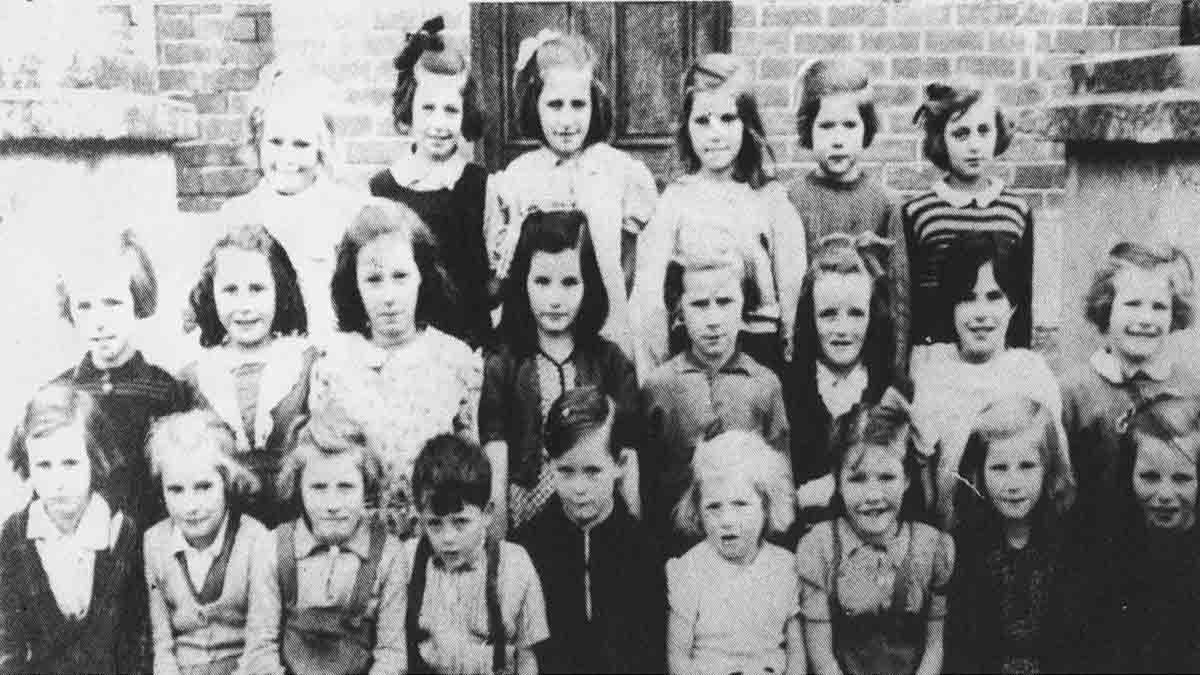BY JOHN FITZGERALD
Part 2
Starting school back in the 1930s didn’t fazeMartin Lynch. He loved every minute of it. After this first year of “babies’ class in Callan’s Convent of Mercy school, he found himself in “Sixes” and it was while in this class that he made his First Communion. First Confession was an equally big adventure for the children, Fr. Kieran Joyce being the priest who heard Martin’s.
After confession and communion, the nuns treated Martin and his fellow pupils to a special breakfast. He described this as a “very enjoyable” occasion. Sisters Celestine and Clare dominated Martin’s final year with the nuns.
Sister Clare had been a nurse in the Callan Workhouse Hospital and renowned as much for her kindness and compassion in that capacity as for her impeccable teaching prowess.
It was in 1938 that Callan saw the beginnings of a secondary education for girls. Thanks to the enterprising spirit of Sister Juliana, a senior’s class was attached to the National School at the Convent, making it possible for pupils to study for Intermediate or Leaving Cert exams.
Among the first pupils to register for this new class was Stasia Broderick, the future Sister Canice. It was in October 1944 that Sister Marie Therese, a secondary school teacher, entered the Convent. Her teaching and education management skills became legendary, and she helped to transform the fortunes of girls in the district who wished to progress beyond primary school.
Sadly, this dedicated Mercy Sister, whose proud legacy will be treasured forever in Callan, passed away in the summer of 2008.
Martin Lynch had nothing but the highest of praise and admiration for the Mercy Sisters. In July 1935, he said goodbye to the good nuns at the Convent. He then had the option of attending the Christian Brothers School in West Street or the Academy on the Clonmel Road.
The Academy
Like many families in the townlands of Ahenure, Attitinoe, and Bauntha, Martin’s parents sent him to the Academy. The School Manager was the Parish Priest, Fr. Phelan. Ed Lyng N.T. was Principal and his assistant was Ms R. Flynn N.T. Martin had fond memories of Ms. Flynn and her devotion to the Irish language.
Charlie Hayden, local church organist and Choir Master, was the Academy’s singing tutor. A gifted musician, he helped the school to win numerous prizes in Plain Chant competitions. In 1940, it was presented with a Certificate of Merit at the Dublin Feis Ceoil.
Martin is proud of the fact that four past pupils of the Academy were ordained as priests between 1930 and 1940: Canon Peter Lyons, Bauntha, Canon Nicholas Roughan, Ahenure; Monsignor Eamon Lyng, Newtown; and Fr. James O’ Halloran, the Salesian priest and critically acclaimed author.
In a talk he gave at Callan Parish Hall in 2003, Fr. O’ Halloran recalled another pupil who attended the Academy. This boy had flaming red hair, and glasses that “slid down his nose in professorial fashion.”
His schoolbag was heavily laden with books and he went out of his way to be seen carrying a hurley; an object of almost religious significance to the county’s passionate GAA fans.
This intellectually inclined and slightly “nerdish” pupil was none other than Tom Kilroy, the future writer and author of, among other acclaimed works of fiction, The Big Chapel.
The Academy continued to serve as a primary school until the mid 1950s, when the VEC took it over. Today the building houses the local library.
To be continued…




















